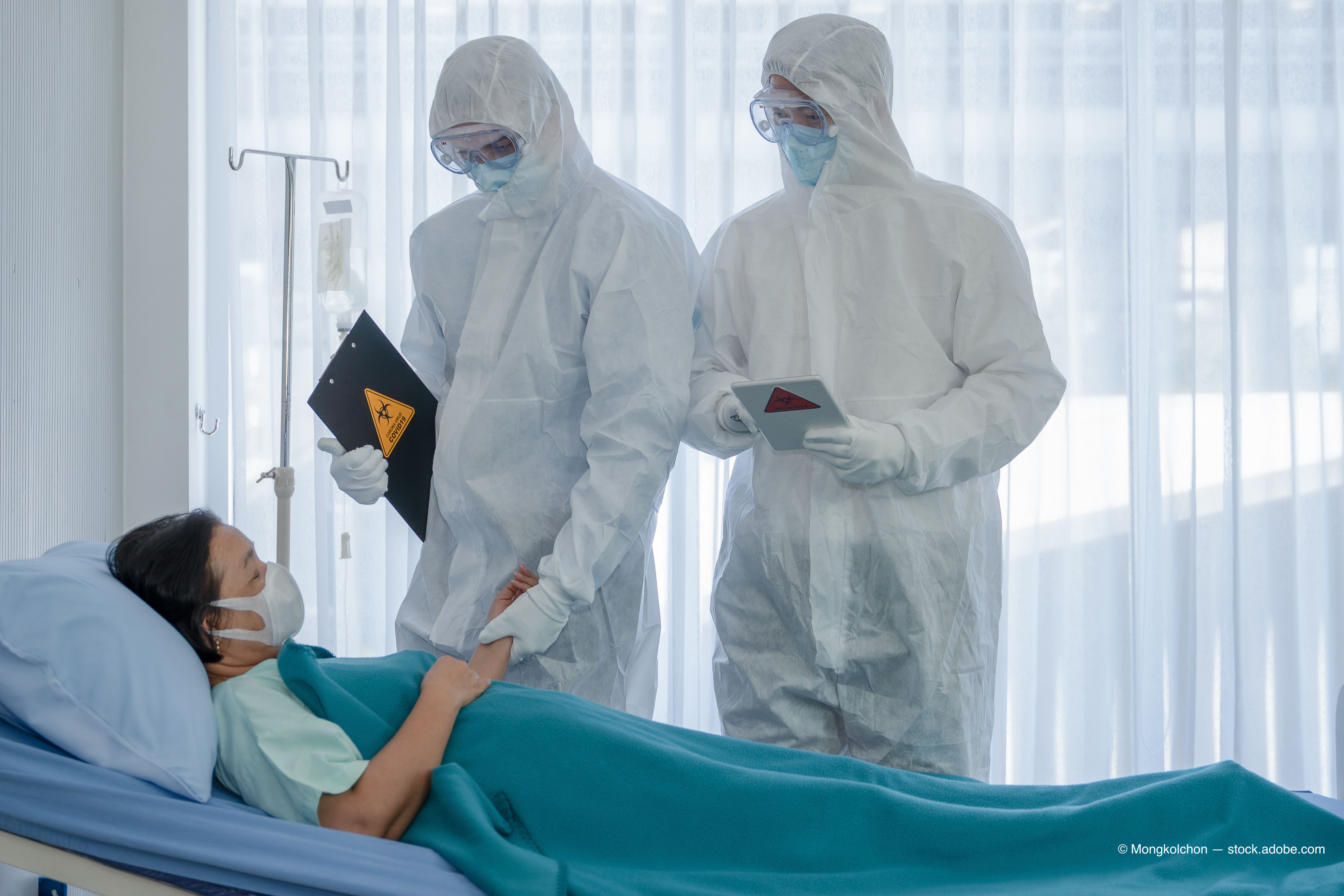Publication
Article
Digital Edition
Protection of eyes during prone positioning must be routinely monitored in ICU
Author(s):
Treatment of patients with COVID-19 should include ophthalmic considerations.


Special to Ophthalmology Times®
Patients who become infected with coronavirus disease 2019 (COVID-19) may develop severe acute respiratory distress syndrome, leading to respiratory compromise, inability to maintain adequate oxygenation, and possibly intubation for mechanical ventilation.
During the pandemic, physicians working in intensive care units (ICUs) discovered that placing patients with COVID-19-associated acute respiratory distress syndrome in the prone position allows for better oxygenation of the lungs.
Related: Glaucoma care after COVID-19: The Pan-American view
These patients may be placed in the prone position, either intubated or non-intubated, for up to 16 hours or more, sometimes for several weeks.
In the prone position, the head is turned to the side to allow for proper positioning of the endotracheal tube and its connection to the ventilator.
In this position, it is possible for the side of the face to become compressed against the bed or pillow. This can cause compression of the eye and could result in an orbital compartment syndrome.
I was joined by Lucy Sun, MD, and Maggie Hymowitz, MD, from the Department of Ophthalmology at Northwell Health in Great Neck, New York, to report our experience with patients examined in the ICU at Long Island Jewish Medical Center during the peak of the COVID-19 pandemic in spring 2020.
Related: Eyecare professionals advise on cleaning, disinfection guidelines to promote safety
Sun, a third-year ophthalmology resident deployed to the ICU during this period, and a corneal fellow at Emory Eye Center, took the initiative to evaluate patients she identified in the ICU who were prone positioned and had periorbital edema, to determine whether there were ocular abnormalities. She evaluated 4 patients with periorbital edema.
Two patients had substantially elevated IOP, as well as bilateral optic disc edema and peripapillary retinal hemorrhages.
Sun discussed her findings with Hymowitz, an ophthalmic hospitalist and assistant professor of ophthalmology at Zucker School of Medicine at Hofstra/Northwell who runs the inpatient consult service at Northwell, and with me.
Together, we concluded that prone positioning of patients can be associated with elevated IOP from periorbital edema, direct compression on the eye and/or increased orbital venous pressure.
Related: Study: Sore eyes a common symptom in COVID-19 patients
Patients with COVID-19 may also develop papillophlebitis (combined optic disc edema and retinal hemorrhages), which may occur as a result of a hypercoagulable state caused by COVID-19.
Because of the small number of patients, it could not be determined whether the retinal findings were because of a hypercoagulable state alone, orbital compression alone, or a result of the combined effects of both.
A few other cases of papillophlebitis associated with COVID-19 have been recently published.2-4
The recognition of these findings in patients in the ICU led to discussions within the ophthalmology department, as well as with administrators at Northwell Health, to develop guidelines for prone-positioned patients in the ICU to ensure that the eyes are appropriately protected with cushioning to prevent compression.
Related: Pearls for drawing patients back to your practice
The guidelines also specify details about the cushioning, borrowing from techniques used by anesthesiologists for eye protection for prone-positioned patients.
We know from previously reported cases of ischemic optic neuropathy or orbital compartment syndrome in prone-positioned patients, especially during operations that last for hours, that proper positioning of patients and protection of the eyes are critically important in preventing loss of vision.
Patients who are prone positioned in the ICU because of COVID-19 are at potentially much higher risk for vision loss because of the weeks they are positioned this way, making protection of the eyes with appropriate cushioning an important consideration.
We found that in the busy ICU setting, this issue was frequently not considered, because of the challenges of managing these extremely medically complicated patients and trying to keep them alive.
Related: Slit-lamp breath shields: Larger is better for protection from coronavirus during exams
With the projected surges in COVID-19 infection rates occurring in the United States and around the world, it is likely that similar cases of ocular compression in ICUs have occurred and will continue in the ICU, often filled to or over capacity with patients on ventilators.
We encourage ophthalmologists to be vigilant at their affiliated hospitals for similar cases and to take the initiative to determine whether guidelines for eye protection are in place in the ICU by actively discussing this issue with their critical care colleagues.
With the expected rise in COVID-19 infections projected through the winter and number of patients anticipated to require intubation and prone positioning, it is critically important for guidelines for eye protection to be developed. Guidelines can prevent ocular morbidity in prone-positioned patients in the ICU.
Read more COVID-19 coverage here
About the author
Howard D. Pomeranz, MD, PhD
p: 516/470-2020
Pomeranz is chief of the neuro-ophthalmology service at Northwell Health in Great Neck, New York, and a professor of ophthalmology at Zucker School of Medicine at Hofstra/Northwell.
--
References
1. Sun L, Hymowitz M, Pomeranz HD. Eye protection for patients with COVID-19 undergoing prolonged prone-position ventilation. JAMA Ophthalmol. Published online November 19, 2020. doi:10.1001/jamaophthalmol.2020.4988
2. Insausti-Garcia A, Reche-Sainz JA, Ruiz-Arranz C, Vazquez AL, Ferro-Osuna M. Papillophlebitis in a COVID-19 patient: inflammation and hypercoagulable state. Eur J Ophthalmol. Published online July 30, 2020. doi:10.1177/1120672120947591
3. Marinho PM, Marcos AAA, Romano AC, Nascimento H, Belfort R Jr. Retinal findings in patients with COVID-19. Lancet. 2020;395(10237):1610. doi:10.1016/S0140-6736(20)31014-X
4. Landecho MF, Yuste JR, Gandara E, et al. COVID-19 retinal microangiopathy as an in vivo biomarker of systemic vascular disease? J Intern Med. Published online July 30, 2020. doi:10.1111/joim.13156

Newsletter
Don’t miss out—get Ophthalmology Times updates on the latest clinical advancements and expert interviews, straight to your inbox.




